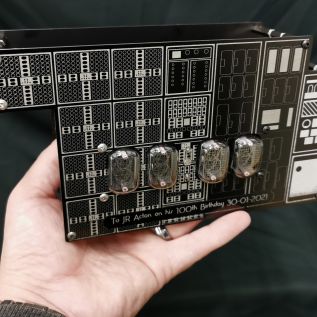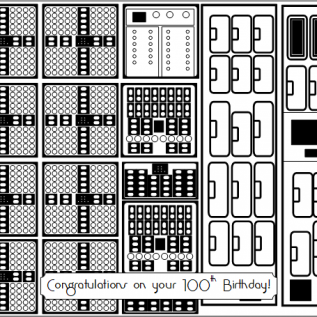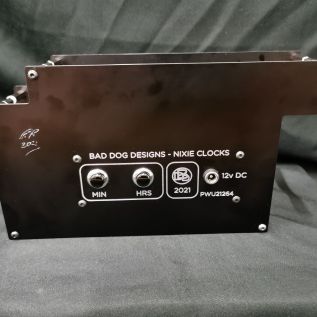The W.I.T.C.H Computer clock
Back in 1944, an Engineer called Dr J R Acton was working at Ericsson and invented something called a Dekatron tube https://en.wikipedia.org/wiki/Dekatron This was a very early electronic component that divided up pulses and could be used for counting. To that end, hundreds of them were then used as the memory component of one of the worlds earliest digital computers. Called the Harwell computer, its build started in 1949 and became operational in April 1951 https://en.wikipedia.org/wiki/Harwell_computer Then later renamed as the W.I.T.C.H ( Wolverhampton Instrument for Teaching Computing from Harwell ) and is now a fully restored computer, recognised by Guinness as the worlds earliest working digital computer, and on permanent display at the UK's National Museum of Computing.
Dr Acton turned 100 in January 2021, and I was honoured to have been asked by his Grandson to make a special clock that celebrated both his centenary and also his achievement! So, I decided upon a miniature verson of the Harwell computer, faithfully reproduced from the original machine. I took an original photograph and then created a digital vector drawing from scratch, every dekatron tube shrank from 30mm to 2mm! but all present and correct.
The clock was then constructed from 2 sheets of anodised aluminium, the top black layer then blasted away with a fibre laser to reveal the silver metal underneath, some of the lines measuring just 0.2mm thick! but all the detail captured to then make an instantly recognisable version of the computer that would not have been possible without the work and contribution from Dr Acton.
.jpg)

.jpg)




